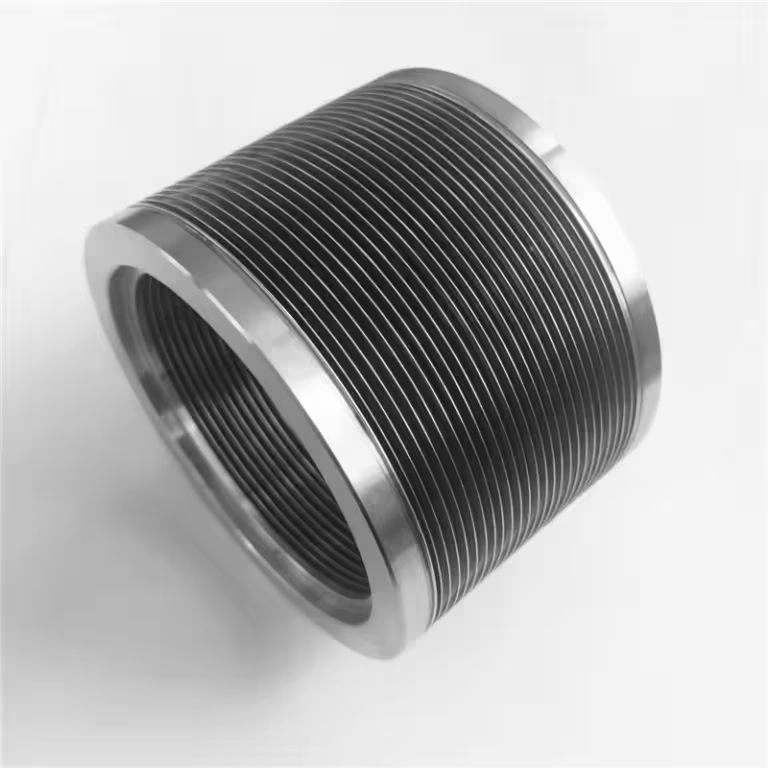In the machinery industry, throttle bushes and throat bushes are two distinct components that serve different purposes despite their similar names. While both are used in pumping systems, their specific roles and characteristics set them apart.
This article will delve into the key differences between throttle bushes and throat bushes, including their primary functions, material designs, purposes within pumping systems, and the pressure applications they are best suited for. By understanding these distinctions, professionals can make informed decisions when selecting and maintaining these critical components in their machinery.

What Is Throttle Bush
A throttle bush, also known as a throttle bushing or throttle sleeve, is a cylindrical component found in pumps and other fluid control devices. It is located in the pump casing and surrounds the throttle shaft or throttle spindle. The throttle bush serves as a bearing surface for the throttle shaft, allowing it to rotate smoothly and precisely within the pump casing.
The primary purpose of the throttle bush is to provide a stable and wear-resistant support for the throttle shaft. It helps maintain the proper alignment of the shaft and reduces friction during operation. Throttle bushes are typically made from materials such as bronze, brass, or polymer, which offer good lubricity and resistance to wear and corrosion.
In addition to supporting the throttle shaft, the throttle bush also helps seal the pump casing, preventing fluid leakage around the shaft. Some throttle bush designs incorporate sealing elements, such as O-rings or lip seals, to enhance their sealing capabilities.
What Is Throat Bush
A throat bush, also referred to as a neck bush or neck ring, is another component found in pumps, particularly in centrifugal pumps. It is located in the pump casing, specifically in the throat area where the impeller discharge meets the casing.
The primary function of the throat bush is to provide a replaceable wearing surface in the high-velocity and high-pressure region of the pump. It is designed to withstand the erosive and abrasive effects of the pumped fluid as it transitions from the impeller to the casing.
Throat bushes are typically made from hard, wear-resistant materials such as stainless steel, bronze, or ceramic. These materials are chosen for their ability to withstand the harsh conditions and maintain dimensional stability over time.
The throat bush also plays a role in maintaining the efficiency and performance of the pump. By providing a smooth and precise transition between the impeller and the casing, it helps reduce turbulence and minimize energy losses. Additionally, the throat bush helps maintain the proper clearance between the impeller and the casing, which is critical for optimal pump performance.
Key Differences Between Throttle Bush and Throat Bush
Primary Function
Throttle bush and throat bush serve different primary functions within pumping systems. Throttle bush is designed to control the flow of fluid by regulating the opening and closing of the pump’s suction and discharge valves. It acts as a variable restriction device, allowing operators to adjust the flow rate according to system requirements.
In contrast, throat bush is primarily responsible for guiding and supporting the pump shaft within the stuffing box. It helps maintain proper shaft alignment, minimizing vibration and wear. Additionally, throat bush provides a sealing surface for packing or mechanical seals, preventing fluid leakage along the shaft.
Material Design
Throttle bush is typically made from wear-resistant materials such as stainless steel, bronze, or engineered plastics. These materials offer excellent resistance to erosion and corrosion caused by the high-velocity fluid flow through the bush.
Throat bush, on the other hand, is often manufactured from softer materials like bronze, brass, or thermoplastics. The choice of material depends on factors such as the pump’s operating conditions, the chemical compatibility with the pumped fluid, and the required lubrication properties. Softer materials allow for better conformity to the shaft surface and provide improved sealing characteristics.
Pressure Application
The pressure application of throttle bush and throat bush varies based on their locations within the pump. Throttle bush is subjected to high-pressure differentials as it controls the flow between the suction and discharge sides of the pump. It must withstand the erosive effects of high-velocity fluid flow and maintain its dimensional stability under varying pressure conditions.
Throat bush, situated within the stuffing box, experiences lower pressure compared to throttle bush. However, it plays a vital role in maintaining the pressure boundary between the pump’s internal components and the atmosphere. Throat bush, along with the packing or mechanical seals, prevents fluid leakage and maintains the pump’s efficiency by minimizing recirculation losses.




